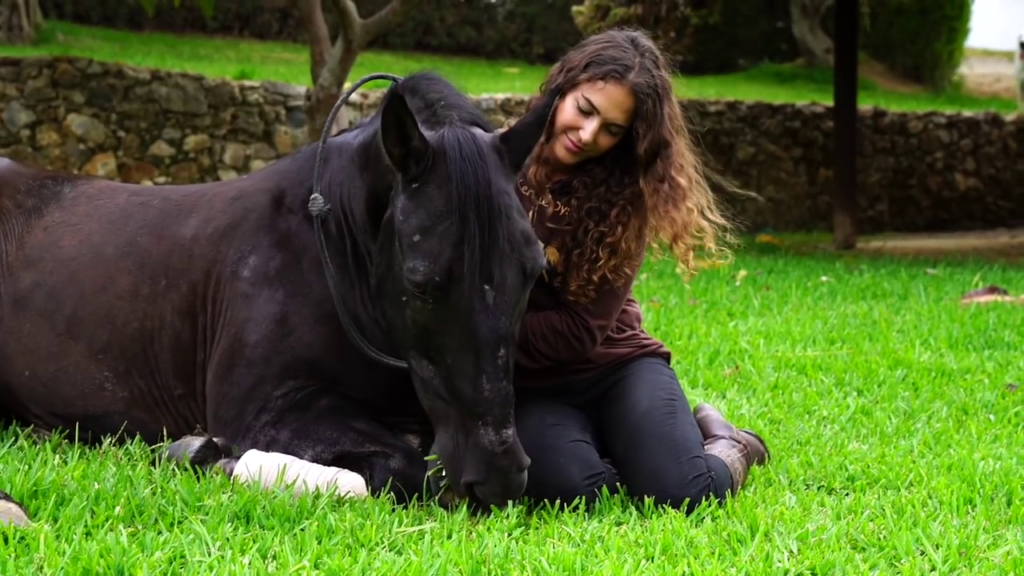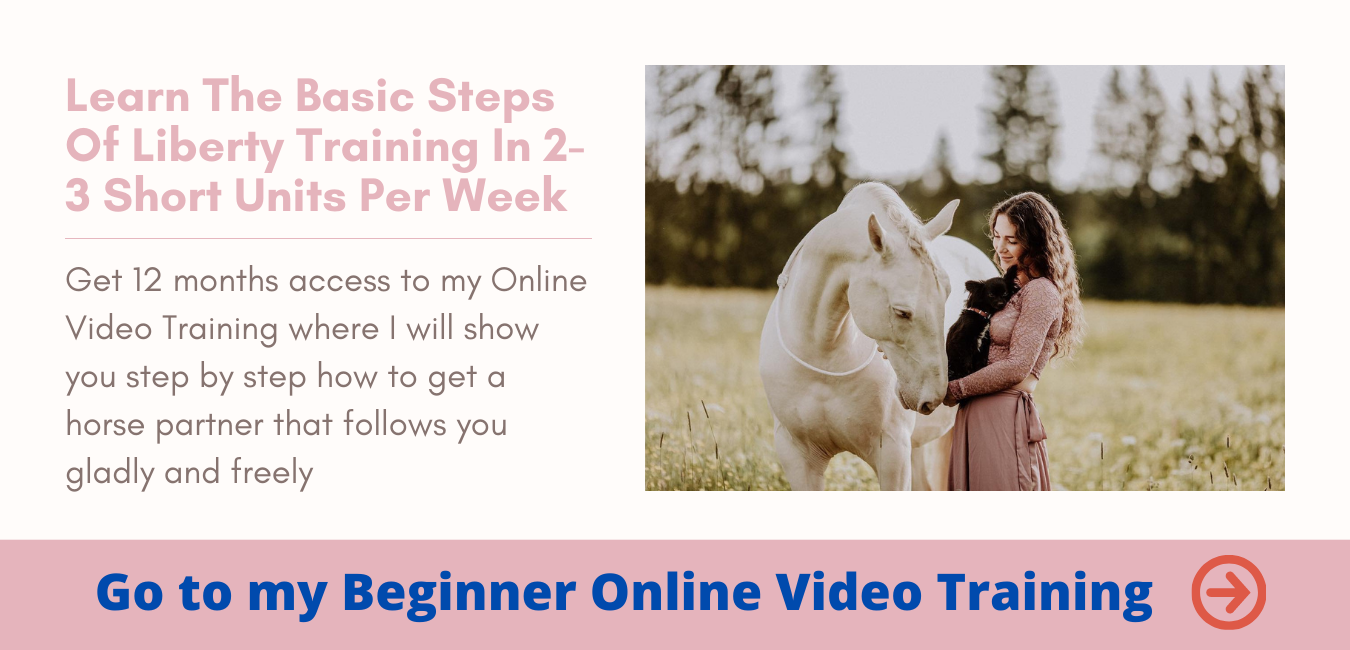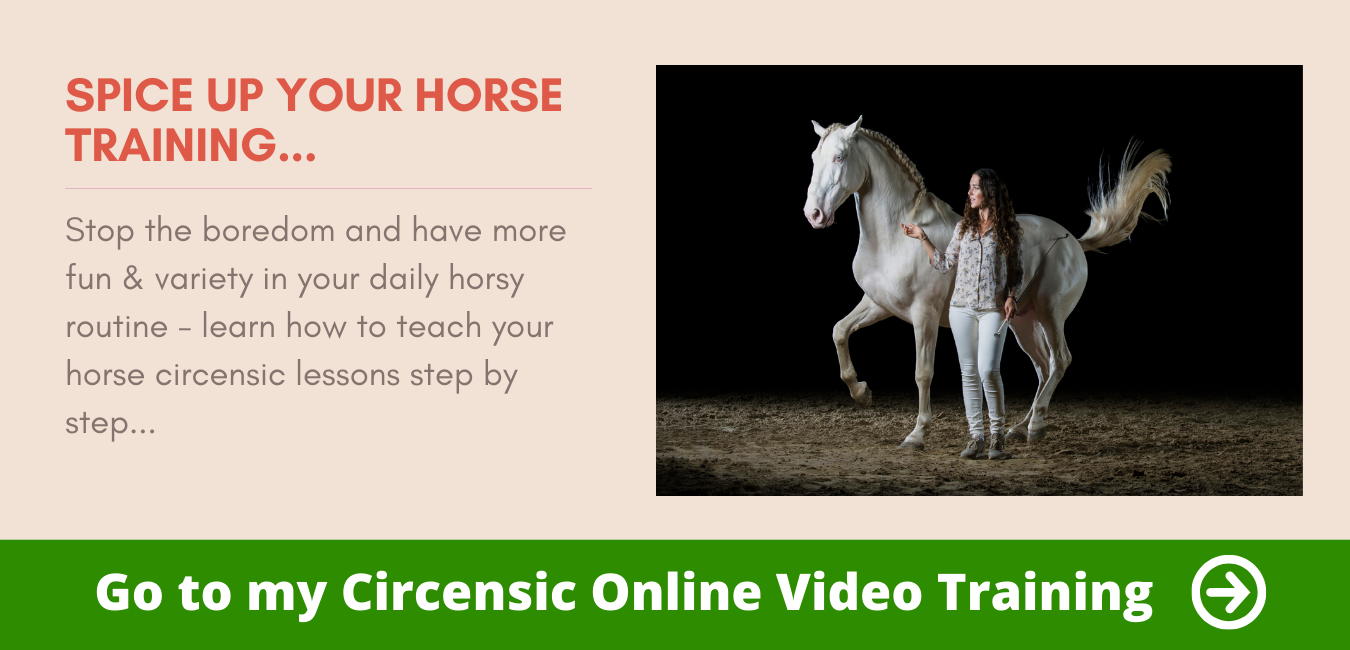We have already talked about so many training possibilities and “construction sites” with our horses.
But there is one aspect we have neglected so far. It is about older horses!
Because the respect we have for the horses should not end with dancing, dominance, motivation, etc., but should be about one thing above all:
That our horses are doing well with us – in the long run!
…and that best of all until old age! Because I find it frightening to believe the one or other study.
According to this study, our horses in Germany only live to be 8 years old on average. Since a horse is only really fully grown at 7 years of age, I find this a very sad result.
Therefore, it is all the more important to me to talk to you today about how you can keep your horse fit not only psychologically but also physically.
But at what point is a horse actually seen as old?
There is no general answer to this question. Of course, you usually see the first white hairs on the face from the age of 20. But does that automatically mean that horses from the age of 20 are old? Of course not!
Many horses are still absolutely fit and capable at this age – many even want to be kept busy and find it very difficult to accept “a life as a pensioner”.
In addition, many horses that are continuously trained hardly show their age. They are still bursting with muscles and are more fiery than many a 3-year-old – so nothing can be generalized here.
However, when the first aches and pains come or the last phase of illness has caused the horse to lose more and more weight, this does not necessarily mean that the horse has to stop working.
Liberty training is also suitable for older horses – there are just a few things to consider. And then you can still have just as much fun despite the one or other little ailment as at your best times ?
What do I have to pay attention to now?
The most important thing you need (even) more with older horses than with younger ones is patience!
Because you should invest much more time in warming up from the beginning.
Older horses need longer until their muscles, tendons and ligaments and their “joint lubricant” become warm and loose and work well.
If you don’t take enough time, tendon problems are almost pre-programmed and you will feel much harder because your horse is still too stiff during work.
Correct warming up
You can arrange the warm-up in many different ways. The best way is to stay in step. But of course you can also be a little creative!
Apart from the fact that you can also combine your warm-up with a small round of cross-country riding, you can let your horse step over after a few rounds and gradually add side walks or the shoulder walk.
You can also add parades to stop or a few kicks backwards. The warm-up phase is also a good opportunity to get in contact with the horse’s mouth and make a pleasant connection.
Of course you can also start on the ground!
In fact, there is nothing wrong with warming up your horse a few laps “on foot” and reminding him from below to arch his back in a relaxed manner.
It doesn’t matter if you use a cavesson or a halter with knots, but you should make sure that you have a gymnastic and correct posture.
Don’t forget to keep your horse diligently – because the warm-up phase is your foundation for further work every day.
Depending on how your horse is held, this phase can last a good 20-30 minutes – especially when it is really “cold” coming out of the box.
Free work for “oldies”
In free work, the basic principle is to make sure that your horse doesn’t take too tight turns. An extremely small circle around you on which you do not move makes no sense.
Do your horse a favor and walk along generously, because then your horse will be much easier!
Apart from that, the demarcation is not really suitable for pensioners anymore. If my horse runs away from me during free work, I send him from left to right on short distances by blocking his way forward in the roundpen until he turns to me again.
With older horses you should try to avoid this situation if possible.
[su_youtube url=”https://youtu.be/7HK5ZFxpqNo”]
This can mean that you train the lessons longer on the halter until they are really secure.
But you can also try all the exercises a bit more calmly and with less energy from your side, because then the probability of your horse breaking out is lower.
As long as it is comfortable and not too exhausting, there is no reason for the horse to run away ? If your horse does run away, you should still do it – in moderation! – try to be consistent and make it “uncomfortable” for your horse to run away.
Provided you wish that your horse would not run away in the future. Otherwise you can of course be a little lenient. But be careful: Small concessions often turn into big compromises faster than you think!
It is worthwhile to observe your horse in the paddock to find out what it can still do. If, for example, he bucks and jumps around like a youngster, you will have to be less considerate than with a horse that is also running more calmly and restrained with his mates.
Borders – where to start, where to stop?
Once you have observed your horse in his herd, you can draw individual conclusions for the training with your horse, depending on the type.
Every body functions differently and every horse ages at its own pace.
Basically, however, you can say that you should not burden an older horse with too much gallop.
Also collecting lessons like the piaffe, the schooling or the climbing will put more stress on your horse than before. Relaxed exercises and a relaxed training atmosphere help a lot.
Nevertheless, the best solution is to listen to your gut feeling and watch your horse very closely – it will show you what is possible and what is not.
Rebuild muscles?
If your older horse is currently not in good muscular condition – for whatever reason – this is no reason to retire your horse directly.
Your horse can also rebuild his muscles in >20 years, although it may take a little longer.
Basically, avoid tight turns and work more on large sheets. The tighter the circle, the more strenuous it is for your horse!
However, transitions from trot to walk and vice versa not only increase the permeability but are also hard work for the muscles.
Also poles or body bands can help to build up muscles again.
Oldie but Goldie!
In any case, I can only say for myself that older horses fascinate me. Through their life experience they radiate a calmness and often also a wisdom, which fascinates me again and again.
James, my older Spaniard, who still stands for Ostwind on the film set, is by now in any case quite grey. And yet – or maybe because of that – he is my most reliable partner, who knows exactly what is important and what I want from him.
I can only advise you to take the time for your oldie that he needs. Older horses are often much better teachers – after all, they have even more practice in reading people ?
Just bring a little more patience. It’s worth it – not only for your horse but also for the development of your personality. Then you will hopefully have fun with your senior for a long time to come!
All the best,
Your Kenzie




